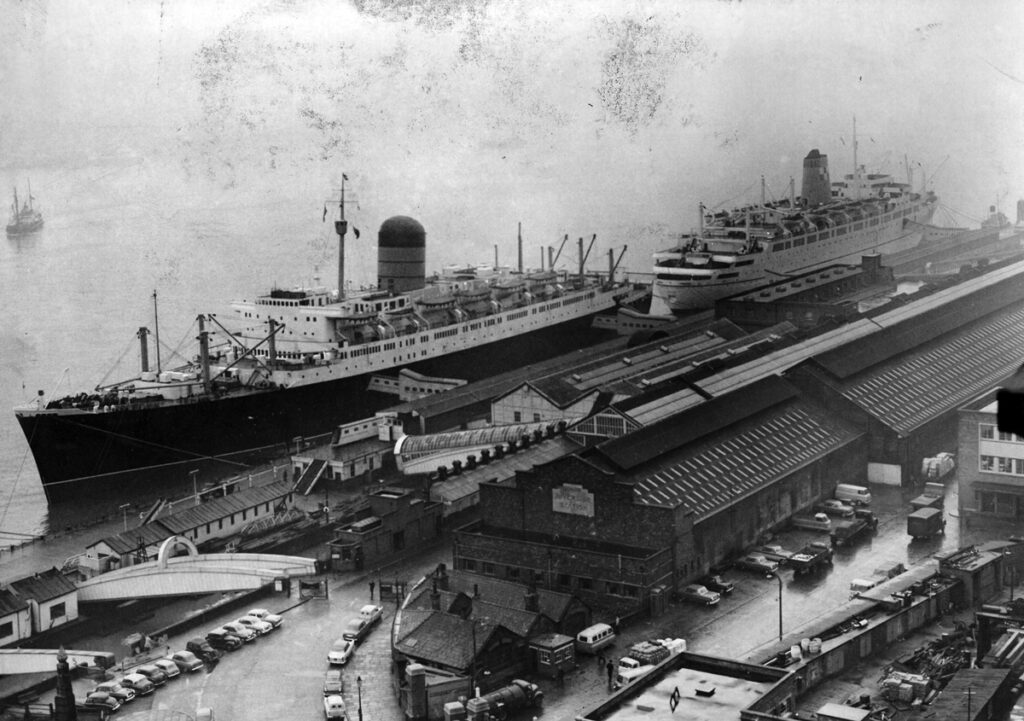IT is widely agreed that the ocean liner was invented in Liverpool, probably first emerging at White Star Line’s RMS Oceanic of 1870. Although the world’s first trans-ocean scheduled steamship had actually begun with the rival Cunard Line’s PS Britannia on 4 July, 1840 when she departed Liverpool for Boston, USA, with Samuel Cunard and his daughter aboard.
A superb exhibition celebrating the ocean liner is now running, not in Liverpool, but in London, because that’s where these things happen. What is very disappointing is that the exhibition, on at the Victoria and Albert Museum, won’t be coming to Liverpool, but instead after its London run finishes next month, will move much further north to Dundee. This is because Dundee is home to the Victoria and Albert Museum’s satellite museum.
Logical enough and it’s good that this calibre of exhibition even makes it out of London, never mind so far away to a place whose citizens probably rarely get to the capital. But surely, a show put together with such effort and intelligence should make Liverpool its post-Dundee port of call?
Also as the former Second City of the British Empire, whose claim to that title and purpose was as the hub of sea routes servicing those imperial lines, Liverpool should be included as a final destination before the exhibition is broken up?
One of the first items – although that’s hardly an adequate description – you come across on entering the exhibition is a 30ft long model of the former Cunard Line flagship RMS Queen Elizabeth (I). This jaw-droppingly magnificent model originally graced the Broadway booking hall of Cunard’s New York office and is now home-ported in the Peabody Essex Museum, Mass, USA.
But if you walk round to the model’s stern, there clearly beneath the liner’s name is her port of registry: Liverpool. Given that the exhibition covers the broadest scope of international ocean liners and as its secondary title says, their ‘Speed and Style’, then I admit Liverpool and its liners get a reasonable representation. There are White Star and Cunard posters, a first class bed from Mauretania (I), a chunk of panelling and a deckchair found in the debris field after Titanic sank, plus a tiara rescued from Lusitania, sunk while en route to Liverpool. I also loved the giant video wall of liners sailing past. Of the trio depicted, two have strong Liverpool links: RMS Olympic (Titanic’s elder sister) was owned and registered in Liverpool, and QE2 was conceived in the city’s Pier Head former HQ, the Cunard Building. (The third ship is the legendary French superliner SS Normandie, looking fabulous, so no complaints there.)
Which takes me to my final point. The Cunard Building in Liverpool is a sensational construction, based on Michelangelo’s Farnese Palace in Rome, but as if on steroids. Its literally palatial ground floor booking halls would be a perfect venue for this exhibition. In fact, there should be a permanent version, but I’m being realistic in my ambitions – let’s focus on getting the V&A’s version in first.
So perhaps Tristram Hunt, the V&A’s head honcho could be persuaded to dock the show here? After all, in the past he’s taken a serious interest in Liverpool and its history in his writings. Maybe we could get the support of his former Parliamentary colleague, Liverpool Riverside MP Louise Ellman? Also, the former V&A chair, Paula Ridley, a proud Liverpolitan and a force to be reckoned with could also extend her considerable influence to help this fine cause?
Ocean Liners – Speed and Style, exhibition at Victoria and Albert Museum, South Kensington, London, until 17 June 2018.

